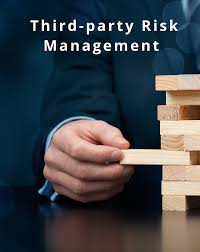One cannot really say enough about risk assessments in the context of anti-corruption programs. This is because every corporate compliance program should be based on a risk assessment, on an understanding of your organization’s business from the commercial perspective, on how your organization has identified, assessed, and defined its risk profile and, finally, on the degree to which the program devotes appropriate scrutiny and resources to this range of risks. The 2023 ECCP added a new emphasis on the cadence of Risk Assessments, mandating that risk assessments should be done not less than annually, but in reality it should be done each time your risk changes. Over the past couple of years, every company’s risks changed in going to Work From Home to Return to the Office to the Hybrid Work environments of 2024. What about geopolitical issues, supply chain or even potential compliance risks in the 2024 election cycle. Have you assessed each of these new paradigms for risks from the compliance perspective?
As far back as 1999, in the Metcalf & Eddy enforcement action, the DOJ has said that risk assessments that measure the likelihood and severity of possible FCPA violations should direct your resources to manage these risks. The 2012 FCPA Guidance stated it succinctly when it said, “Assessment of risk is fundamental to developing a strong compliance program and is another factor DOJ and SEC evaluate when assessing a company’s compliance program.”
Having made clear what was risks needed to be assessed, the 2023 ECCP was focused on the methodology used in the risk assess process. It stated:
Risk Management Process—What methodology has the company used to identify, analyze, and address the particular risks it faces? What information or metrics has the company collected and used to help detect the type of misconduct in question? How have the information or metrics informed the company’s compliance program?
Risk-Tailored Resource Allocation—Does the company devote a disproportionate amount of time to policing low-risk areas instead of high-risk areas, such as questionable payments to third-party consultants, suspicious trading activity, or excessive discounts to resellers and distributors? Does the company give greater scrutiny, as warranted, to high-risk transactions (for instance, a large-dollar contract with a government agency in a high-risk country) than more modest and routine hospitality and entertainment?
Updates and Revisions—Is the risk assessment current and subject to periodic review? Is the periodic review limited to a “snapshot” in time or based upon continuous access to operational data and information across functions? Has the periodic review led to updates in policies, procedures, and controls? Do these updates account for risks discovered through misconduct or other problems with the compliance program?
Rick Messick, in his article, entitled, Corruption Risk Assessments: Am I Missing Something?, laid out the four steps of a risk assessment as follows:
First, all conceivable forms of corruption to which the organization, the activity, the sector, or the project might be exposed is catalogued. Second, an estimate of how likely it is that each of the possible forms of corruption will occur is prepared and third an estimate of the harm that will result if each occurrence is developed. The fourth step combines the chances of occurrence with the probability of its impact to produce a list of risks by priority.
What should you assess? In 2011, the DOJ concluded three FCPA enforcement actions which specified factors that a company should review when making a risk assessment. The three enforcement actions, involving Alcatel-Lucent S.A., Maxwell Technologies Inc. and Tyson Foods Inc., all had common areas that the DOJ indicated were compliance risk areas which should be evaluated for a minimum best practices compliance program. The Alcatel-Lucent and Maxwell Technologies Deferred Prosecution Agreements (DPAs) listed seven areas of risk to be assessed, which are still relevant today:
1. Where your company does business;
2. Geography-where does your Company do business;
3. Interaction with types and levels of governments;
4. Industrial sector of operations;
5. Involvement with joint ventures;
6. Licenses and permits in operations; and
7. Degree of government oversight.
The 2020 FCPA Resource Guide, 2nd edition, laid out the following approach, “Factors to consider, for instance, include risks presented by: the country and industry sector, the business opportunity, potential business partners, level of involvement with governments, amount of government regulation and oversight, and exposure to customs and immigration in conducting business affairs. When assessing a company’s compliance program, DOJ and SEC take into account whether and to what degree a company analyzes and addresses the particular risks it faces.”
Another approach, as detailed by David Lawler in his book Frequently Asked Questions in Anti-Bribery and Corruption, is to break the risk areas into the following categories: 1) company risk, 2) country risk, 3) sector risk, 4) transaction risk, and 5) business partnership risk. He further detailed these categories as follows:
Company risk. Lawler believes this is “only to be likely to be relevant when assessing a number of different companies—either when managing a portfolio of companies from the perspective of a head office of a conglomerate or private equity house.” High risk companies involve some of the following characteristics:
• Private companies with a close shareholder group;
• Large, diverse and complex groups with a decentralized management structure;
• An autocratic top management;
• A previous history of compliance issues; and/or
• Poor marketplace perception
Country risk. This area involves countries which have a high reported level or perception of corruption, have failed to enact effective anti-corruption legislation and have a failure to be transparent in procurement and investment policies. The Transparency International Corruption Perceptions Index (TI-CPI) can be a good starting point. Other indices you might consider are the Worldwide Governance Indicators and the Global Integrity index.
Sector risk. These involve areas that require a significant amount of government licensing or permitting to do business in a country. It includes the usual suspects of:
• Large scale infrastructure areas;
• Pharmaceutical, medical device and healthcare; and/or
Transaction risk. Lawler says this risk “first and foremost identifies and analyses the financial aspects of a payment or deal. This means that it is necessary to think about where your money is ending up.” Indicia of transaction risk include:
• Involves many contractor or other third-party intermediaries; and/or
• Do not appear to have a clear legitimate object
Business partnership risk. This prong recognizes that certain manners of doing business present more corruption risk than others and may include:
• Use of third-party representatives in transactions with foreign government officials;
• A number of consortium partners or joint ventures partners; and/or
• Relationships with politically exposed persons (PEPs)
There are a number of ways you can slice and dice your basic risk assessment inquiry. As with almost all FCPA compliance, it is important that your protocol be well thought out. If you use one, some or all of the above as your basic inquiries for your risk analysis, it should be acceptable for your starting point.












